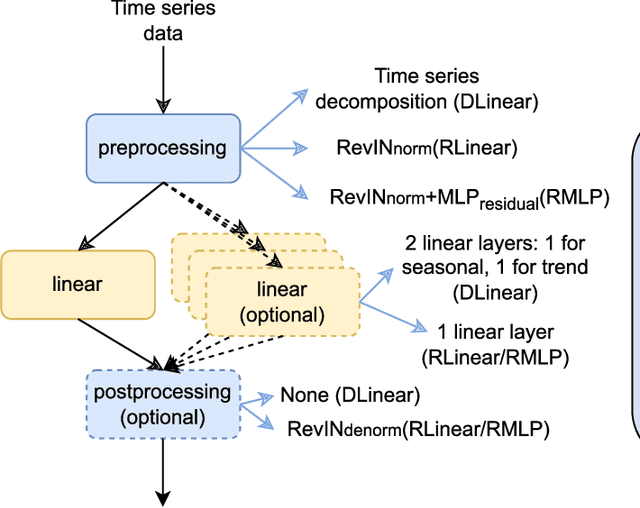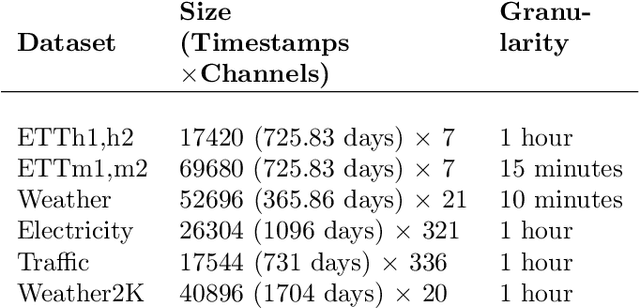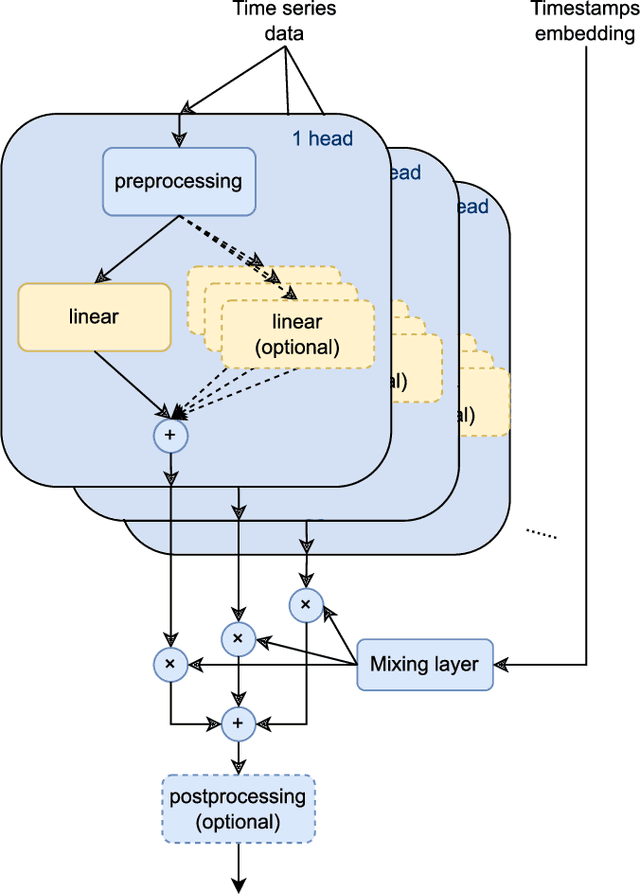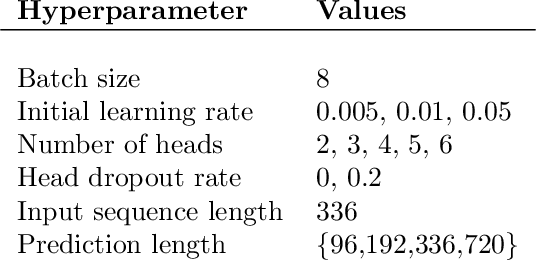Giulia Fanti
BaNEL: Exploration Posteriors for Generative Modeling Using Only Negative Rewards
Oct 10, 2025Abstract:Today's generative models thrive with large amounts of supervised data and informative reward functions characterizing the quality of the generation. They work under the assumptions that the supervised data provides knowledge to pre-train the model, and the reward function provides dense information about how to further improve the generation quality and correctness. However, in the hardest instances of important problems, two problems arise: (1) the base generative model attains a near-zero reward signal, and (2) calls to the reward oracle are expensive. This setting poses a fundamentally different learning challenge than standard reward-based post-training. To address this, we propose BaNEL (Bayesian Negative Evidence Learning), an algorithm that post-trains the model using failed attempts only, while minimizing the number of reward evaluations (NREs). Our method is based on the idea that the problem of learning regularities underlying failures can be cast as another, in-loop generative modeling problem. We then leverage this model to assess whether new data resembles previously seen failures and steer the generation away from them. We show that BaNEL can improve model performance without observing a single successful sample on several sparse-reward tasks, outperforming existing novelty-bonus approaches by up to several orders of magnitude in success rate, while using fewer reward evaluations.
Private Evolution Converges
Jun 10, 2025Abstract:Private Evolution (PE) is a promising training-free method for differentially private (DP) synthetic data generation. While it achieves strong performance in some domains (e.g., images and text), its behavior in others (e.g., tabular data) is less consistent. To date, the only theoretical analysis of the convergence of PE depends on unrealistic assumptions about both the algorithm's behavior and the structure of the sensitive dataset. In this work, we develop a new theoretical framework to explain PE's practical behavior and identify sufficient conditions for its convergence. For $d$-dimensional sensitive datasets with $n$ data points from a bounded domain, we prove that PE produces an $(\epsilon, \delta)$-DP synthetic dataset with expected 1-Wasserstein distance of order $\tilde{O}(d(n\epsilon)^{-1/d})$ from the original, establishing worst-case convergence of the algorithm as $n \to \infty$. Our analysis extends to general Banach spaces as well. We also connect PE to the Private Signed Measure Mechanism, a method for DP synthetic data generation that has thus far not seen much practical adoption. We demonstrate the practical relevance of our theoretical findings in simulations.
Private Federated Learning using Preference-Optimized Synthetic Data
Apr 23, 2025Abstract:In practical settings, differentially private Federated learning (DP-FL) is the dominant method for training models from private, on-device client data. Recent work has suggested that DP-FL may be enhanced or outperformed by methods that use DP synthetic data (Wu et al., 2024; Hou et al., 2024). The primary algorithms for generating DP synthetic data for FL applications require careful prompt engineering based on public information and/or iterative private client feedback. Our key insight is that the private client feedback collected by prior DP synthetic data methods (Hou et al., 2024; Xie et al., 2024) can be viewed as a preference ranking. Our algorithm, Preference Optimization for Private Client Data (POPri) harnesses client feedback using preference optimization algorithms such as Direct Preference Optimization (DPO) to fine-tune LLMs to generate high-quality DP synthetic data. To evaluate POPri, we release LargeFedBench, a new federated text benchmark for uncontaminated LLM evaluations on federated client data. POPri substantially improves the utility of DP synthetic data relative to prior work on LargeFedBench datasets and an existing benchmark from Xie et al. (2024). POPri closes the gap between next-token prediction accuracy in the fully-private and non-private settings by up to 68%, compared to 52% for prior synthetic data methods, and 10% for state-of-the-art DP federated learning methods. The code and data are available at https://github.com/meiyuw/POPri.
A Water Efficiency Dataset for African Data Centers
Dec 04, 2024Abstract:AI computing and data centers consume a large amount of freshwater, both directly for cooling and indirectly for electricity generation. While most attention has been paid to developed countries such as the U.S., this paper presents the first-of-its-kind dataset that combines nation-level weather and electricity generation data to estimate water usage efficiency for data centers in 41 African countries across five different climate regions. We also use our dataset to evaluate and estimate the water consumption of inference on two large language models (i.e., Llama-3-70B and GPT-4) in 11 selected African countries. Our findings show that writing a 10-page report using Llama-3-70B could consume about \textbf{0.7 liters} of water, while the water consumption by GPT-4 for the same task may go up to about 60 liters. For writing a medium-length email of 120-200 words, Llama-3-70B and GPT-4 could consume about \textbf{0.13 liters} and 3 liters of water, respectively. Interestingly, given the same AI model, 8 out of the 11 selected African countries consume less water than the global average, mainly because of lower water intensities for electricity generation. However, water consumption can be substantially higher in some African countries with a steppe climate than the U.S. and global averages, prompting more attention when deploying AI computing in these countries. Our dataset is publicly available on \href{https://huggingface.co/datasets/masterlion/WaterEfficientDatasetForAfricanCountries/tree/main}{Hugging Face}.
Truncated Consistency Models
Oct 18, 2024



Abstract:Consistency models have recently been introduced to accelerate sampling from diffusion models by directly predicting the solution (i.e., data) of the probability flow ODE (PF ODE) from initial noise. However, the training of consistency models requires learning to map all intermediate points along PF ODE trajectories to their corresponding endpoints. This task is much more challenging than the ultimate objective of one-step generation, which only concerns the PF ODE's noise-to-data mapping. We empirically find that this training paradigm limits the one-step generation performance of consistency models. To address this issue, we generalize consistency training to the truncated time range, which allows the model to ignore denoising tasks at earlier time steps and focus its capacity on generation. We propose a new parameterization of the consistency function and a two-stage training procedure that prevents the truncated-time training from collapsing to a trivial solution. Experiments on CIFAR-10 and ImageNet $64\times64$ datasets show that our method achieves better one-step and two-step FIDs than the state-of-the-art consistency models such as iCT-deep, using more than 2$\times$ smaller networks. Project page: https://truncated-cm.github.io/
Data Distribution Valuation
Oct 06, 2024Abstract:Data valuation is a class of techniques for quantitatively assessing the value of data for applications like pricing in data marketplaces. Existing data valuation methods define a value for a discrete dataset. However, in many use cases, users are interested in not only the value of the dataset, but that of the distribution from which the dataset was sampled. For example, consider a buyer trying to evaluate whether to purchase data from different vendors. The buyer may observe (and compare) only a small preview sample from each vendor, to decide which vendor's data distribution is most useful to the buyer and purchase. The core question is how should we compare the values of data distributions from their samples? Under a Huber characterization of the data heterogeneity across vendors, we propose a maximum mean discrepancy (MMD)-based valuation method which enables theoretically principled and actionable policies for comparing data distributions from samples. We empirically demonstrate that our method is sample-efficient and effective in identifying valuable data distributions against several existing baselines, on multiple real-world datasets (e.g., network intrusion detection, credit card fraud detection) and downstream applications (classification, regression).
PrE-Text: Training Language Models on Private Federated Data in the Age of LLMs
Jun 05, 2024Abstract:On-device training is currently the most common approach for training machine learning (ML) models on private, distributed user data. Despite this, on-device training has several drawbacks: (1) most user devices are too small to train large models on-device, (2) on-device training is communication- and computation-intensive, and (3) on-device training can be difficult to debug and deploy. To address these problems, we propose Private Evolution-Text (PrE-Text), a method for generating differentially private (DP) synthetic textual data. First, we show that across multiple datasets, training small models (models that fit on user devices) with PrE-Text synthetic data outperforms small models trained on-device under practical privacy regimes ($\epsilon=1.29$, $\epsilon=7.58$). We achieve these results while using 9$\times$ fewer rounds, 6$\times$ less client computation per round, and 100$\times$ less communication per round. Second, finetuning large models on PrE-Text's DP synthetic data improves large language model (LLM) performance on private data across the same range of privacy budgets. Altogether, these results suggest that training on DP synthetic data can be a better option than training a model on-device on private distributed data. Code is available at https://github.com/houcharlie/PrE-Text.
Improving the Training of Rectified Flows
May 30, 2024Abstract:Diffusion models have shown great promise for image and video generation, but sampling from state-of-the-art models requires expensive numerical integration of a generative ODE. One approach for tackling this problem is rectified flows, which iteratively learn smooth ODE paths that are less susceptible to truncation error. However, rectified flows still require a relatively large number of function evaluations (NFEs). In this work, we propose improved techniques for training rectified flows, allowing them to compete with knowledge distillation methods even in the low NFE setting. Our main insight is that under realistic settings, a single iteration of the Reflow algorithm for training rectified flows is sufficient to learn nearly straight trajectories; hence, the current practice of using multiple Reflow iterations is unnecessary. We thus propose techniques to improve one-round training of rectified flows, including a U-shaped timestep distribution and LPIPS-Huber premetric. With these techniques, we improve the FID of the previous 2-rectified flow by up to 72% in the 1 NFE setting on CIFAR-10. On ImageNet 64$\times$64, our improved rectified flow outperforms the state-of-the-art distillation methods such as consistency distillation and progressive distillation in both one-step and two-step settings and rivals the performance of improved consistency training (iCT) in FID. Code is available at https://github.com/sangyun884/rfpp.
On the Convergence of Differentially-Private Fine-tuning: To Linearly Probe or to Fully Fine-tune?
Feb 29, 2024


Abstract:Differentially private (DP) machine learning pipelines typically involve a two-phase process: non-private pre-training on a public dataset, followed by fine-tuning on private data using DP optimization techniques. In the DP setting, it has been observed that full fine-tuning may not always yield the best test accuracy, even for in-distribution data. This paper (1) analyzes the training dynamics of DP linear probing (LP) and full fine-tuning (FT), and (2) explores the phenomenon of sequential fine-tuning, starting with linear probing and transitioning to full fine-tuning (LP-FT), and its impact on test loss. We provide theoretical insights into the convergence of DP fine-tuning within an overparameterized neural network and establish a utility curve that determines the allocation of privacy budget between linear probing and full fine-tuning. The theoretical results are supported by empirical evaluations on various benchmarks and models. The findings reveal the complex nature of DP fine-tuning methods. These results contribute to a deeper understanding of DP machine learning and highlight the importance of considering the allocation of privacy budget in the fine-tuning process.
Mixture-of-Linear-Experts for Long-term Time Series Forecasting
Dec 11, 2023



Abstract:Long-term time series forecasting (LTSF) aims to predict future values of a time series given the past values. The current state-of-the-art (SOTA) on this problem is attained in some cases by linear-centric models, which primarily feature a linear mapping layer. However, due to their inherent simplicity, they are not able to adapt their prediction rules to periodic changes in time series patterns. To address this challenge, we propose a Mixture-of-Experts-style augmentation for linear-centric models and propose Mixture-of-Linear-Experts (MoLE). Instead of training a single model, MoLE trains multiple linear-centric models (i.e., experts) and a router model that weighs and mixes their outputs. While the entire framework is trained end-to-end, each expert learns to specialize in a specific temporal pattern, and the router model learns to compose the experts adaptively. Experiments show that MoLE reduces forecasting error of linear-centric models, including DLinear, RLinear, and RMLP, in over 78% of the datasets and settings we evaluated. By using MoLE existing linear-centric models can achieve SOTA LTSF results in 68% of the experiments that PatchTST reports and we compare to, whereas existing single-head linear-centric models achieve SOTA results in only 25% of cases. Additionally, MoLE models achieve SOTA in all settings for the newly released Weather2K datasets.
 Add to Chrome
Add to Chrome Add to Firefox
Add to Firefox Add to Edge
Add to Edge